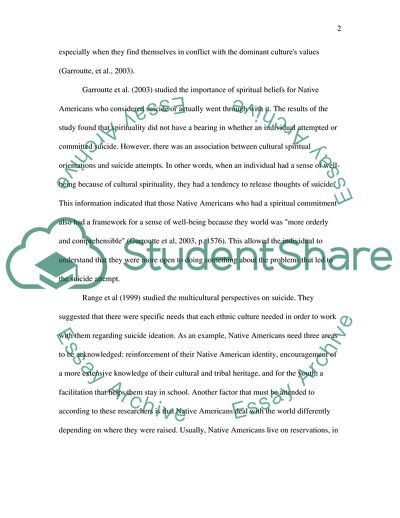Cite this document
(Ethical and Cultural Dimensions in Suicidal Behaviour in Native Case Study, n.d.)
Ethical and Cultural Dimensions in Suicidal Behaviour in Native Case Study. Retrieved from https://studentshare.org/social-science/1740913-ethical-and-cultural-dimensions-in-suicidal-behaviour
Ethical and Cultural Dimensions in Suicidal Behaviour in Native Case Study. Retrieved from https://studentshare.org/social-science/1740913-ethical-and-cultural-dimensions-in-suicidal-behaviour
(Ethical and Cultural Dimensions in Suicidal Behaviour in Native Case Study)
Ethical and Cultural Dimensions in Suicidal Behaviour in Native Case Study. https://studentshare.org/social-science/1740913-ethical-and-cultural-dimensions-in-suicidal-behaviour.
Ethical and Cultural Dimensions in Suicidal Behaviour in Native Case Study. https://studentshare.org/social-science/1740913-ethical-and-cultural-dimensions-in-suicidal-behaviour.
“Ethical and Cultural Dimensions in Suicidal Behaviour in Native Case Study”. https://studentshare.org/social-science/1740913-ethical-and-cultural-dimensions-in-suicidal-behaviour.


